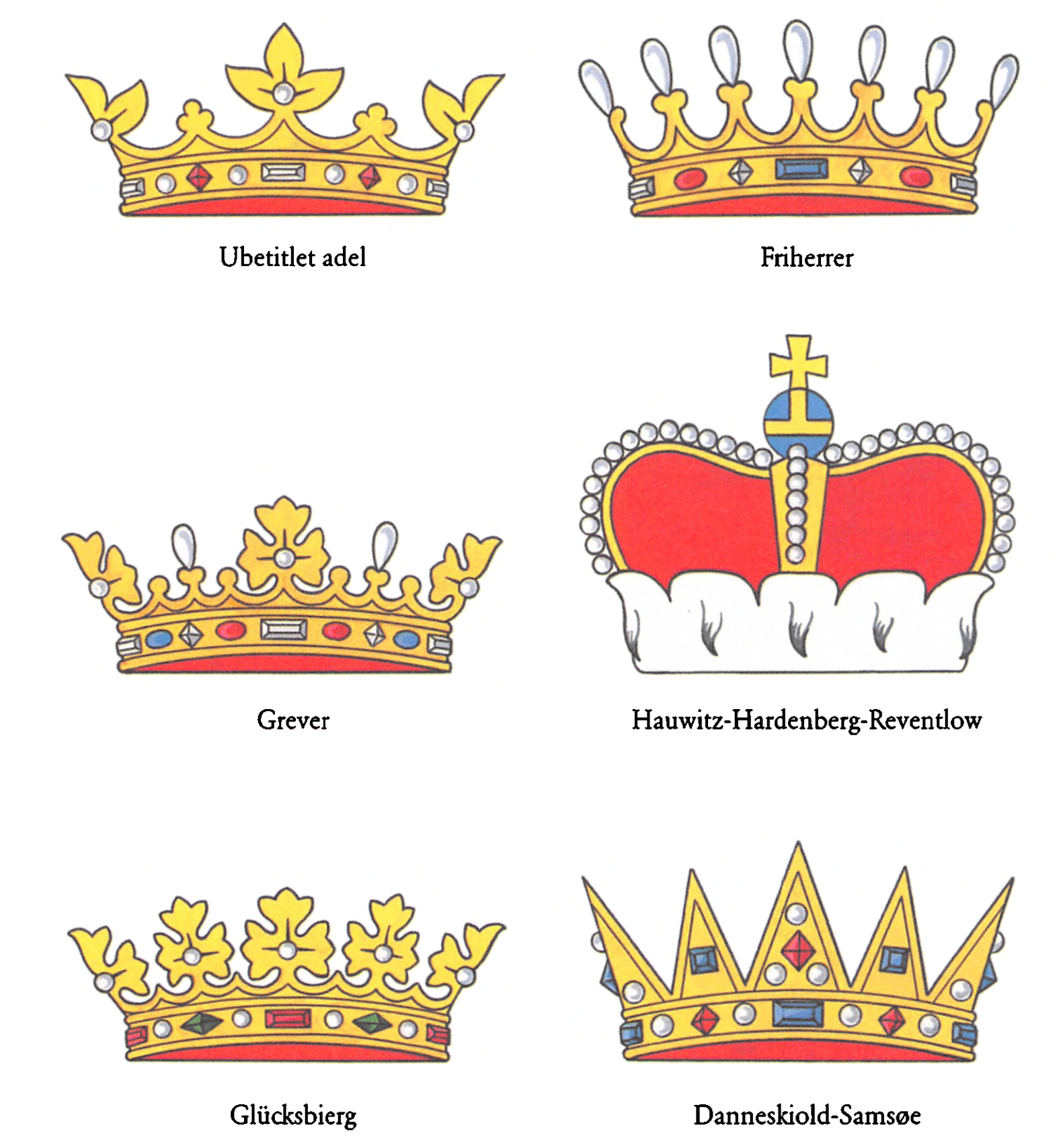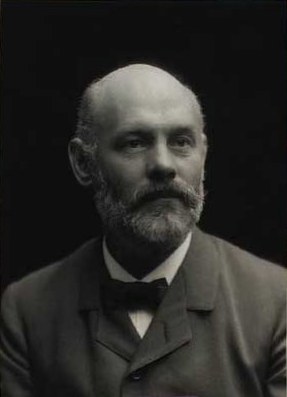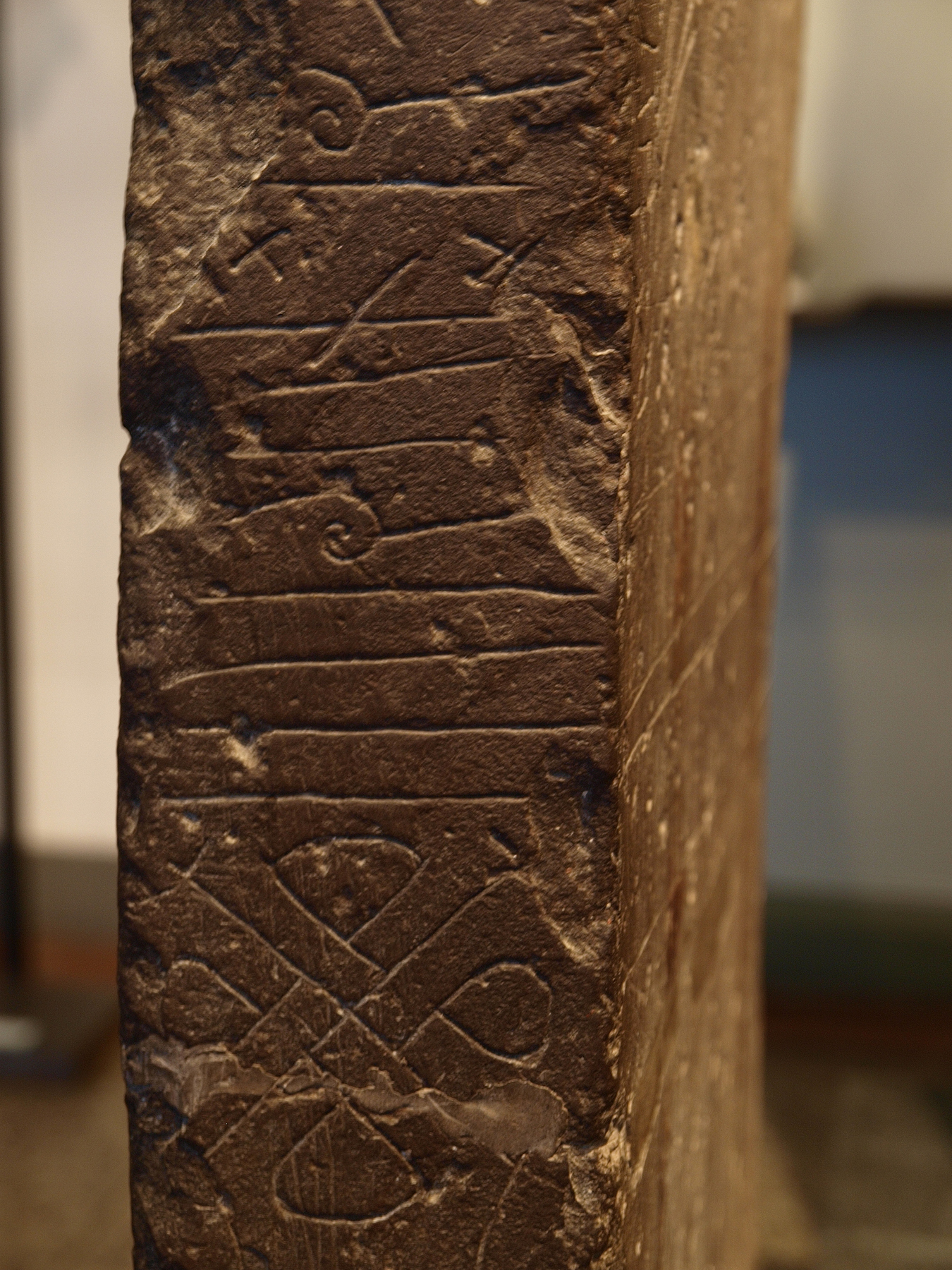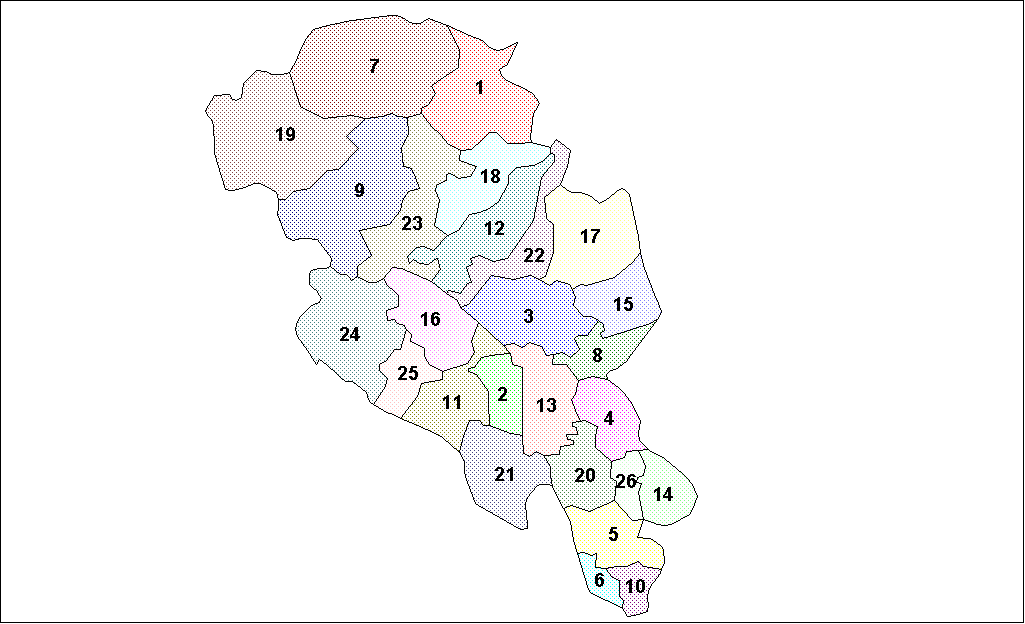|
Stockfleth Family
The Stockfleth family (de Stockfleth/von Stockfleth) is a Dano- Norwegian noble family. Three branches of the family were naturalized as a part of the Danish nobility in 1779, based on a claim that the family had been noble since the time of King Valdemar III (1314–1364). History The family descended from the merchant Eggert Stockfleth (died 1638), originally from Haderslev, Denmark, who moved with his family to Bragernes, Norway in 1629. According to an old unconfirmed tradition he was supposed to descend from an old noble family. Two other branches of the family had been recognized as noble in the Danish order of precedence since the early 17th century. Eggert Stockfleth was the father of the prominent brothers Henning, Jacob and Hans Stockfleth. Henning Stockfleth (1610–1664) studied at the University of Wittenberg for three years before enrolling at the University of Copenhagen in 1635. He then held several official posts before he was appointed Bishop of Chri ... [...More Info...] [...Related Items...] OR: [Wikipedia] [Google] [Baidu] |
Danish Nobility
Danish nobility is a social class and a former estate in the Kingdom of Denmark. The nobility has official recognition in Denmark, a monarchy. Its legal privileges were abolished with the constitution of 1849. Some of the families still own and reside in castles or country houses. A minority of nobles still belong to the elite, and they are as such present at royal events where they hold court posts, are guests, or are objects of media coverage, for example Kanal 4's TV-hostess Caroline Fleming née Baroness Iuel-Brockdorff. Some of them own and manage companies or have leading positions within business, banking, diplomacy and NGOs. Historians divide the Danish nobility into two categories: ancient nobility ( da, uradel) and letter nobility ( da, brevadel) based on the way they achieved nobility. Another status based categorization distinguishes between higher and lower nobility ( da, højadel, lavadel). "Ancient nobility" refer to those noble families that are known from t ... [...More Info...] [...Related Items...] OR: [Wikipedia] [Google] [Baidu] |
Hadeland
Hadeland () is a traditional district in the southeastern part of Norway. It is centered on the southern part of the large lake Randsfjorden in Innlandet and Viken counties. The district consists of the municipalities Gran in Innlandet county and Jevnaker and Lunner in Viken county. Hadeland occupies the area north of the hills of Nordmarka close to the Norwegian capital Oslo. The soil around the Randsfjorden is amongst the most fertile in Norway. Hadeland accounts for just 5% of the country's area, but it represents 13% of its agricultural land. Farmers harvest grains and potatoes. Pigs, dairy cattle, and horses are also bred at farms there. Jevnaker is located to the southern and western side of the Randsfjorden. Gran's rolling countryside is home to about two-thirds of the nearly 30,000 people living in Hadeland. The village of Jaren serves as the area's main center of commerce. The municipality of Gran is divided by the Randsfjorden, and its western part is known as the ''Fj ... [...More Info...] [...Related Items...] OR: [Wikipedia] [Google] [Baidu] |
Sven Tito Achen
Sven Tito Achen (born 29 July 1922 in Buenos Aires, Argentina; died 14 November 1986) was an Argentinian-Danish writer and author on heraldry, co-founder of the Scandinavian Society of Heraldry (Societas Heraldica Scandinavica) and the first editor of the Scandinavian Heraldisk Tidsskrift (Heraldry Journal) published in Denmark. Bibliography *Heraldikkens femten glæder (The Fifteen Joys of Heraldry), 1971 *Alverdens heraldik i farver (Heraldry of the World - In Colours), translated, and edited from Carl Alexander von Volborth, 1972 *Danske adelsvåbener, en heraldisk nøgle (Danish Lordships Coats of Arms, a key to heraldry), 1973 *Symbols Around Us, 1978 *Danmarks kommunevåbener - samt Grønlands og Færøernes (Danish Municipal Heraldry, including Greenland and the Faeroe Islands The Faroe Islands ( ), or simply the Faroes ( fo, Føroyar ; da, Færøerne ), are a North Atlantic island group and an autonomous territory of the Kingdom of Denmark. They are located north ... [...More Info...] [...Related Items...] OR: [Wikipedia] [Google] [Baidu] |
Anders Thiset
Anders Thiset (25 February 1850 -14 July 1917) was a Danish historian, genealogist, heraldic artist, archivist and encyclopedist. Biography Thiset was born in Copenhagen, Denmark. He was a student of H.E. Melchior (1881-1927) and completed Melchiors Borgerskole with a preliminary examination in 1864. He b'Danske adelige Brevkister'' (1897). He is most known for publishing '' Danmarks Adels Aarbog'' from 1884 together with journalist H.R. Hiort References {{Portal, Biography, Denmark, Writing 19th-century Danish historians 20th-century Danish historians Danish genealogists Danish archivists Encyclopedists People from Copenhagen 1850 births 1917 deaths Knights of the Order of the Dannebrog ... [...More Info...] [...Related Items...] OR: [Wikipedia] [Google] [Baidu] |
Stockfleth (other) , a Dano-Norwegian noble family
{{disambiguation, surname ...
Stockfleth is a surname. It can refer to: * Christian Stockfleth (1639–1704), Norwegian civil servant and diplomat *Hans Stockfleth (1600s – 1664), Norwegian civil servant, businessman and investor *Henning Stockfleth (c.1610 – 1664), Norwegian cleric and Bishop of Oslo * Julius Stockfleth (1857–1935), German-born painter * Nils Vibe Stockfleth (1787–1866), Norwegian cleric See also *Stockfleth family The Stockfleth family (de Stockfleth/von Stockfleth) is a Dano- Norwegian noble family. Three branches of the family were naturalized as a part of the Danish nobility in 1779, based on a claim that the family had been noble since the time of King ... [...More Info...] [...Related Items...] OR: [Wikipedia] [Google] [Baidu] |
Hans Stockfleth
Hans Eggertsen Stockfleth (1600s – 19 February 1664) was a Norwegian civil servant, businessman and investor. Stockfleth was a son of Danish merchant Eggert Stockfleth (1565-1638). His parents moved from Haderslev to Bragernes in Buskerud during 1629. He was a brother of bishop Henning Stockfleth (c.1610–1664) and an uncle of diplomat Christian Stockfleth (1640-1704). His brother Jakob Stockfleth (1607-1652) was a Councilor in Christiania (now Oslo). Stockfleth was appointed bailiff of several districts including in Hadeland (1628-29) Gudbrandsdalen (1629-36) and Buskerud (1636-42). His position as bailiff provided an opportunity to achieve personal wealth especially in forested properties. From 1636, Stockfleth operated the Åmot sawmill at Modum in Buskerud. He also controlled the watercourses north of the sawmill, especially from Hallingdal. In 1652-53, Stockfleth acquired additional sites in Aker, Follo, Romerike and Ringerike. He eventually came t ... [...More Info...] [...Related Items...] OR: [Wikipedia] [Google] [Baidu] |
Oslo
Oslo ( , , or ; sma, Oslove) is the capital and most populous city of Norway. It constitutes both a county and a municipality. The municipality of Oslo had a population of in 2022, while the city's greater urban area had a population of in 2019, and the metropolitan area had an estimated population of in 2021. During the Viking Age the area was part of Viken. Oslo was founded as a city at the end of the Viking Age in 1040 under the name Ánslo, and established as a ''kaupstad'' or trading place in 1048 by Harald Hardrada. The city was elevated to a bishopric in 1070 and a capital under Haakon V of Norway around 1300. Personal unions with Denmark from 1397 to 1523 and again from 1536 to 1814 reduced its influence. After being destroyed by a fire in 1624, during the reign of King Christian IV, a new city was built closer to Akershus Fortress and named Christiania in honour of the king. It became a municipality ('' formannskapsdistrikt'') on 1 January 1838. The city fu ... [...More Info...] [...Related Items...] OR: [Wikipedia] [Google] [Baidu] |
Christian IV
Christian IV (12 April 1577 – 28 February 1648) was King of Denmark and Norway and Duke of Holstein and Schleswig from 1588 until his death in 1648. His reign of 59 years, 330 days is the longest of Danish monarchs and Scandinavian monarchies. A member of the House of Oldenburg, Christian began his personal rule of Denmark in 1596 at the age of 19. He is remembered as one of the most popular, ambitious, and proactive Danish kings, having initiated many reforms and projects. Christian IV obtained for his kingdom a level of stability and wealth that was virtually unmatched elsewhere in Europe. He engaged Denmark in numerous wars, most notably the Thirty Years' War (1618–1648), which devastated much of Germany, undermined the Danish economy, and cost Denmark some of its conquered territories. He rebuilt and renamed the Norwegian capital Oslo as ''Christiania'' after himself, a name used until 1925. Early years Birth and family Christian was born at Frederiksborg Cas ... [...More Info...] [...Related Items...] OR: [Wikipedia] [Google] [Baidu] |
Ringerike (traditional District)
Ringerike is a traditional district in Norway, commonly consisting of the municipalities Hole and Ringerike in Buskerud county. In older times, Ringerike had a larger range which went westward to the municipalities Krødsherad, Modum, and Sigdal, also in Buskerud. Ringerike has a rich history that is connected with one of the most notable kings in the history of Norway, the father of King Harald Fairhair Halfdan the Black, who subdued Gandalf, King of Alfheim and half of Vingulmork, and the Dagling clan. Gandalf was possibly the last king of Ringerike, whose name is given to the eponymous King Hring, son of Raum the Old (cf. Romerike), son of Nór (the eponymous ancestor of Norwegians), according to the Sagas of the ancient Northernlands, better known as the Orkneyinga saga. It is possible that this, as the name suggests, was the legendary heartland of the House of Sigurd Hring and Ivar the Wide-Fathoming. There are also many archaeological remains in the area, dating to the med ... [...More Info...] [...Related Items...] OR: [Wikipedia] [Google] [Baidu] |
Hval (Ringerike)
Hval is a village in Ringerike in Buskerud, Norway. The area lies north of Haugsbygd and east of Hønefoss. The old road Hvalsveien runs from Haugsbygd to Hval station, where it changes into Viulsveien in a junction between Hvalsmoveien (E16) and Viul. Hval existed as a farm in the area since the early Middle Ages. In the 17th century the farm was split into several lesser farms including Nedre Hval and Søndre Hval. In the area lies both the former military camp of Hvalsmoen and the now closed Hval station. In 1893 the Norwegian Storting decided to acquire the area around Hvalsmoen, as a drill ground for the Royal Norwegian Army Engineering Regiment (''Den kongelige norske ingeniørbrigade''). When the Bergen Railway was extended from Hønefoss to Roa in 1909, Hval station was built on the Roa–Hønefoss Line (''Roa-Hønefosslinjen''). The station was built based upon designs of architect Paul Armin Due Paul Armin Due (1870–1926) was a Norwegian architect Paul ... [...More Info...] [...Related Items...] OR: [Wikipedia] [Google] [Baidu] |
Sør-Fron
Sør-Fron is a municipality in Innlandet county, Norway. It is located in the traditional district of Gudbrandsdal. The administrative centre of the municipality is the village of Hundorp. Other villages in the municipality include Gålå, Harpefoss, and Lia. The municipality is the 153rd largest by area out of the 356 municipalities in Norway. Sør-Fron is the 224th most populous municipality in Norway with a population of 3,064. The municipality's population density is and its population has decreased by 4.5% over the previous 10-year period. General information The prestegjeld of Fron was established as a civil municipality on 1 January 1838 when the new formannskapsdistrikt law went into effect. On 1 January 1851, the municipality was divided in two. The northwest portion became Nord-Fron Municipality (population: 4,685) and the southeast portion became Sør-Fron Municipality (population: 3,421). On 27 July 1956, a small area of Sør-Fron municipality (population: 7) was ... [...More Info...] [...Related Items...] OR: [Wikipedia] [Google] [Baidu] |
Oppland
Oppland is a former county in Norway which existed from 1781 until its dissolution on 1 January 2020. The old Oppland county bordered the counties of Trøndelag, Møre og Romsdal, Sogn og Fjordane, Buskerud, Akershus, Oslo and Hedmark. The county administration was located in the town of Lillehammer. Merger On 1 January 2020, the neighboring counties of Oppland and Hedmark were merged to form the new Innlandet county. Both Oppland and Hedmark were the only landlocked counties of Norway, and the new Innlandet county is the only landlocked county in Norway. The two counties had historically been one county that was divided in 1781. Historically, the region was commonly known as "Opplandene". In 1781, the government split the area into two: Hedemarkens amt and Kristians amt (later renamed Hedmark and Oppland. In 2017, the government approved the merger of the two counties. There were several names debated, but the government settled on ''Innlandet''. Geography Oppland extend ... [...More Info...] [...Related Items...] OR: [Wikipedia] [Google] [Baidu] |








